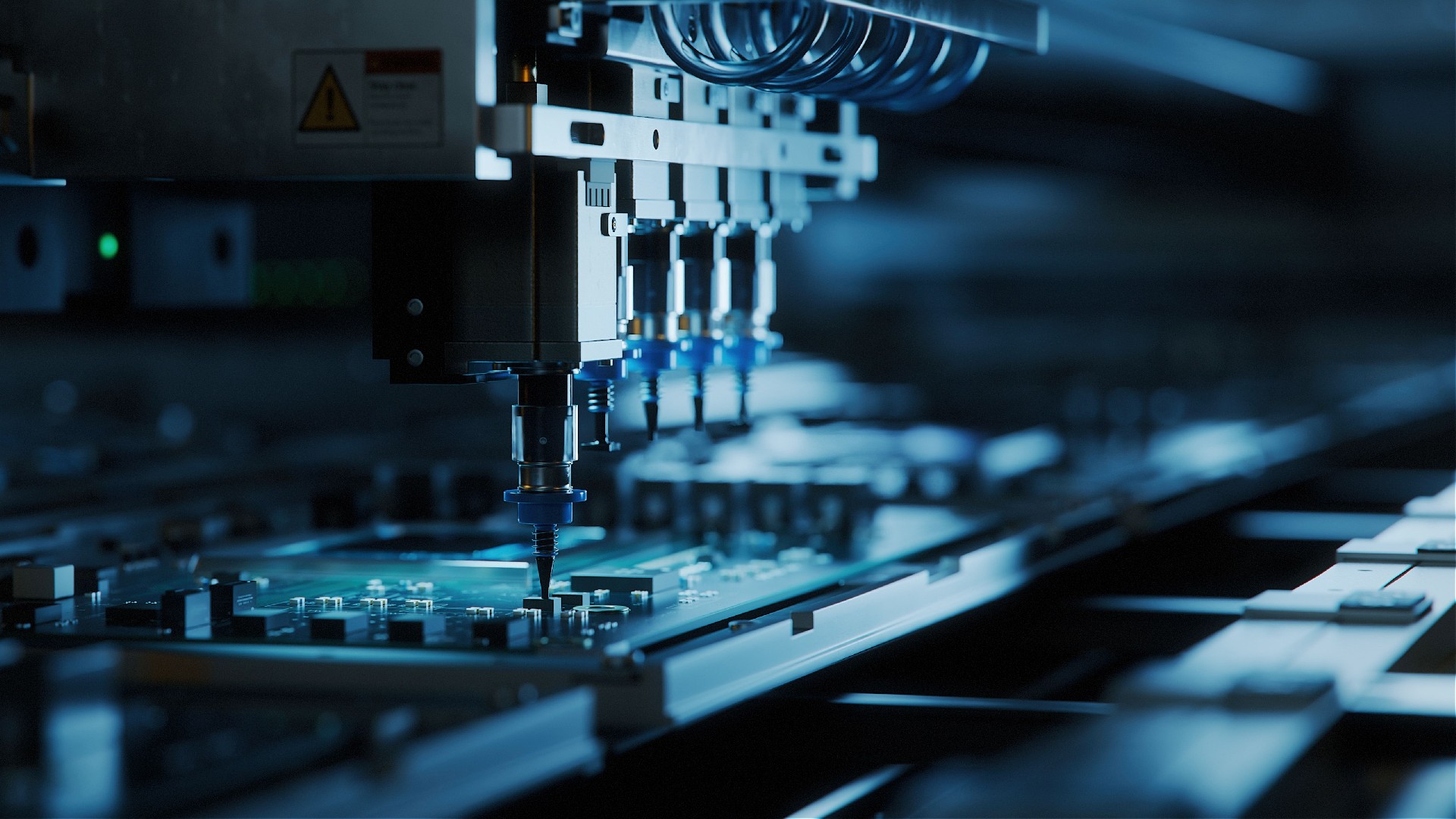"Material Cutting Industry": Making manual decisions about the use of raw materials in a vast inventory of original sheets (tens of millions of tons) is evidently inefficient. Moreover, the pursuit of high cutting rates
It leads to the accumulation of raw material inventory. These are challenges that every factory in the cutting industry needs to address urgently.
Industries related to "cutting" and "trimming," such as textiles, apparel, composite materials, and furniture panels, rely on arranging and cutting based on product shapes during production and manufacturing. The efficiency of these enterprises is primarily limited by labor, experience, and the level of development based on computer-aided design software.
All of this is perfectly fine within the context of information technology.
However, when digital technologies based on big data appear, allowing for mathematical modeling and optimization of business operations and subsequently guiding the digitization of daily operations in enterprises, the traditional ways of creating value in enterprises are inevitably influenced by various emerging technologies such as ERP, MES, APS, IoT sensors, machine learning, artificial intelligence, and others aimed at quickly, flexibly, and creatively collecting, processing, and analyzing data.
Enterprises not only need to proactively embrace these new digital technologies, but they also need to choose from numerous solutions, evaluate how selected solutions can mutually enhance each other, whether they can bring measurable results, and understand the sequence of solution implementation.
In this case, we will focus on the "material cutting industry" to reflect on the path to value creation and share how Synergies Intelligent Systems uses AI technology and algorithms to answer this question - from the perspective of value creation (production) or value protection (reducing inventory backlog), see what kind of solution Synergies Intelligent Systems brings to this industry.
The material-cutting industry cannot escape the following current situations and pain points:
In the context of information technology, each time a factory worker schedules production, they will extract the corresponding CAD drawings. Then, considering the most economical production conditions, they manually arrange the drawings based on the smallest material consumption. This inevitably results in:
1. Time consumption: The results are based on fixed processes and follow a linear sequence.
2. Reliance on experience: Workers rely on "induction" and "established rules" to arrange drawings, purchasing follows conventional procurement processes, and ensures that the work "does not go wrong," completing tasks within the established timeframe.
3. May not be the best solution: A 1% error, when magnified by scales of tens of millions or even hundreds of millions, becomes a matter of life or death for the enterprise.
A customer served by Synergies Intelligent Systems, as a glass manufacturer, also faced similar situations.
On the production side:
1. High-frequency layout tasks: Layout personnel need to create product layouts every day for orders scheduled for the week.
2. Increasing the ratio of shared materials: The principle is that the higher the quantity of original glass sheets ordered, the lower the procurement cost. They attempted to place hundreds to thousands of different products on the original glass sheets.
3. Improving the cutting rate of original glass sheets: By manually assembling drawings, they sought to find the maximum area of glass usage to increase the cutting rate of the original glass sheets and reduce waste.
On the inventory side:
However, using manual methods to determine the use of original glass sheets in a massive inventory (tens of millions of tons) is clearly inefficient. Moreover, the pursuit of a high cutting rate also leads to the accumulation of original glass sheet inventory.
This is manifested in the following ways:
1. Unclear rules for shared materials lead to increased inventory and longer backlog times, making the bulk of original sheet specifications complex.
2. High proportion of manual operations and decisions: Manual judgments for purchasing replenishment and material reserve decisions are based on experience. Despite the introduction of information technology, it only improves the efficiency of individual processes and is not a systematic solution. The visibility of shipments is also low.
3. Data silos and time-consuming data processing: Thousands of new data entries daily are scattered across different systems, making it difficult to cross-reference, seriously reducing decision-making efficiency.
These are the problems that this glass manufacturer urgently needs to solve.
Synergies Intelligent Systems Supply Chain Solution:
In response, Synergies Intelligent Systems provides the following intelligent supply chain solution:
1. Build an intelligent shared material management system with AI algorithms at its core.
2. Automate layout tasks using numerical modeling data.
3. Calculate alternative solutions automatically using process and inventory data, and finally generate a procurement list.
The Art of Advanced Algorithms and Supply Chain Optimization
The core critical elements in the manufacturing industry lie within the supply chain, which includes procurement, manufacturing, and warehouse logistics. Whether it's photovoltaics, household appliances, mechanical manufacturing, or even the "material cutting products" discussed today, their digital entry points generally focus on intelligent manufacturing and JIT (just-in-time) supply chain management to achieve cost reduction, efficiency enhancement, and flexible production.
Among them, in the context of intelligent manufacturing, Synergies Intelligent Systems employs an "intelligent layout system" aimed at reducing material consumption and optimizing inventory utilization. The layout function is structured around three aspects:
Single Product Layout: Generates the basic minimum area blank diagram for production for factory-side prototyping and feasibility validation.
Hypothetical Layout: Customizes original sheet specifications, selects the most suitable products for layout, and verifies the optimal size for purchasing original sheets.
Multi-Product Layout: Under the selection of multiple products, it automatically searches the inventory for the most suitable original sheets for layout. Optimizing material utilization achieves an automated layout for products, reduces the proportion of manual decision-making, further enhances inventory utilization, and strengthens factory production and operation efficiency.
In terms of JIT supply chain management, Synergies Intelligent Systems initially breaks down data silos by connecting data from separate systems, including ERP, MES, process data, numerical modeling, business forecasts, and more, to support decision-making. This is also one of the core advantages of Synergies Intelligent Systems's comprehensive data analysis platform, JarviX.
Once data is imported into JarviX, AI can automatically calculate and generate purchase orders. To facilitate this step, Synergies Intelligent Systems has specially customized the development of the "Shared Material Calculation System" and the "Procurement Demonstration System" to achieve real-time supply chain management.
With the completion of the three major algorithmic system architectures, we achieved astonishing results during the verification phase:
The intelligent layout module and automated procurement planning now take only 10 minutes to produce results, compared to the previous three days, resulting in an 80% reduction in labor hours.
What used to take three days to manually create layout plans, calculate specifications, assess component sharing relationships, and generate procurement plans can now be accomplished in just 10 minutes using this intelligent shared material management system. It automatically calculates original sheet specifications, generates optimal inventory substitution plans and procurement plans, and increases cutting rates by 1%.
For a manufacturer with an annual production value exceeding 20 billion, this represents a substantial return on investment.
Benefits Six Months After Implementing the Intelligent Shared Material Management System:
Overall retrospective economic benefits: The average inventory level decreased by 36.5% in six months, resulting in a savings of ¥20 million in inventory costs.
Five Major Tangible Benefits:
1. Prototyping: Layout personnel can directly use validated design files for prototyping.
2. Customization: Specific original sheet specifications can be input to test the cutting rates for recent products.
3. Time Reduction: Shortening the production layout time for layout personnel while increasing product cutting rates.
4. Inventory Reduction: By using intelligent substitute materials and intelligent panel assembly, inventory original sheet specifications are reduced, and the number of shared materials is reduced from thousands to 33.
5. Dynamic: Combining intelligent supply chain to achieve dynamic calculation of safety stock and real-time replenishment needs, ultimately reducing inventory costs.
Insights into Digital Transformation in the Industry:
Furthermore, from this case of digital transformation and upgrade in the glass manufacturing industry, the Synergies Intelligent Systems team has gained some insights into digital transformation. Here are some insights shared with you:
Insight One: The core critical elements in the manufacturing industry lie within the supply chain, including procurement, manufacturing, and warehouse logistics. The digital entry points in these areas generally focus on intelligent manufacturing and JIT (just-in-time) supply chain management.
Insight Two: Some industries rely on past human experience to make judgments, as seen in the case of the glass manufacturer. In such industries, there may not be a high need for decision-making capability in the production process, and individual decisions may not be major ones. Layout personnel often seek the most cost-effective solution within established processes based on human experience. Industries like these can use big data, algorithms, and models to predict the future. For example, logistics industries relying on inventory and capacity, though relatively primitive, have easily transitioned into the stage of intelligent decision-making.
Insight Three: Some industries rely on significant decision-making, such as investments, consulting, healthcare, and creativity. These industries are forward-looking, and past experiences are often insufficient for making effective judgments. In the foreseeable future, human decision-making capabilities will still be necessary, but big data and artificial intelligence can assist in decision-making. Particularly when effectively using decision-making AI, the quality and speed of their decisions will see a significant improvement after human-machine interaction and training, potentially even serving to build their own core competitive advantages and industry barriers.










